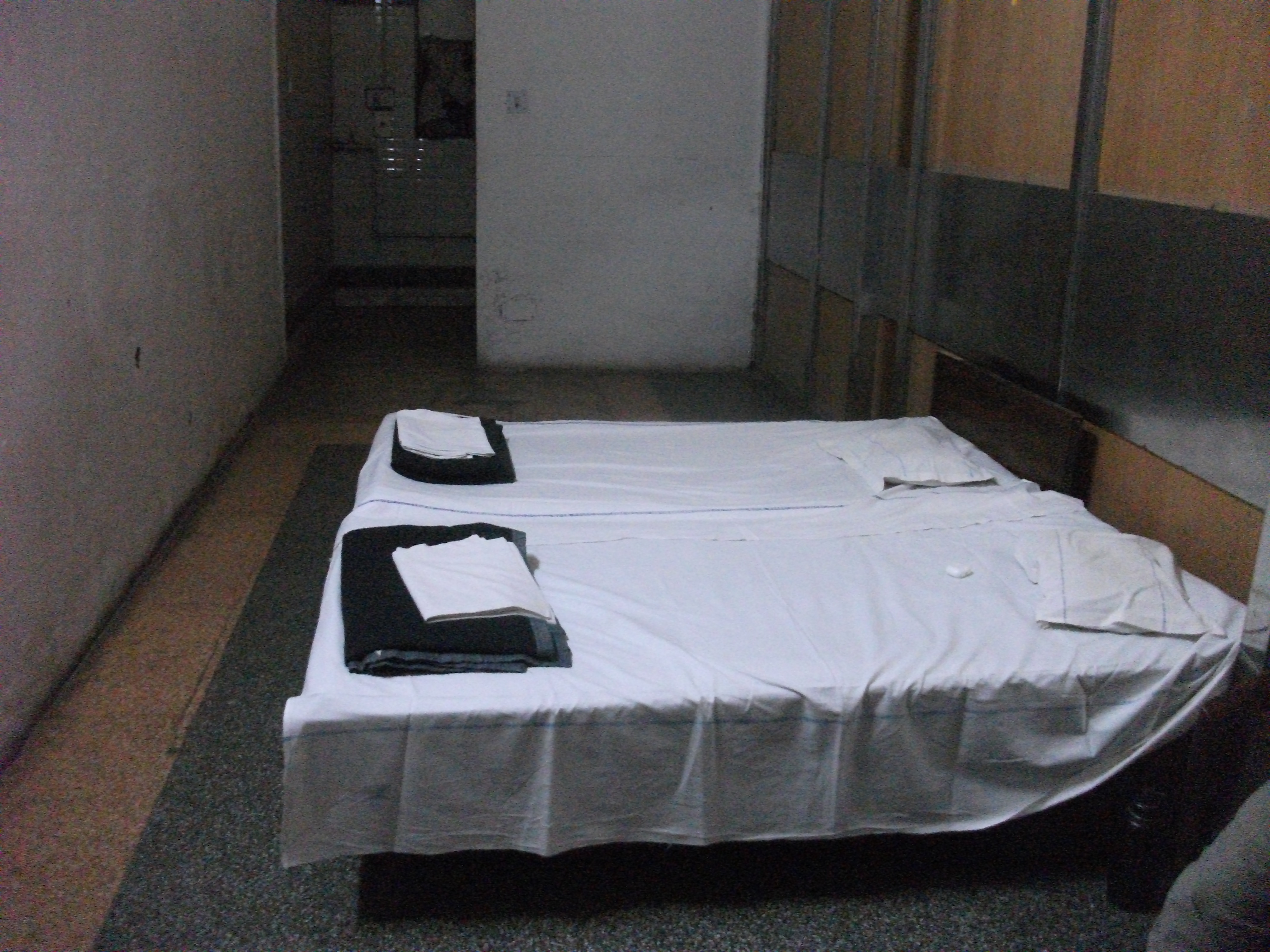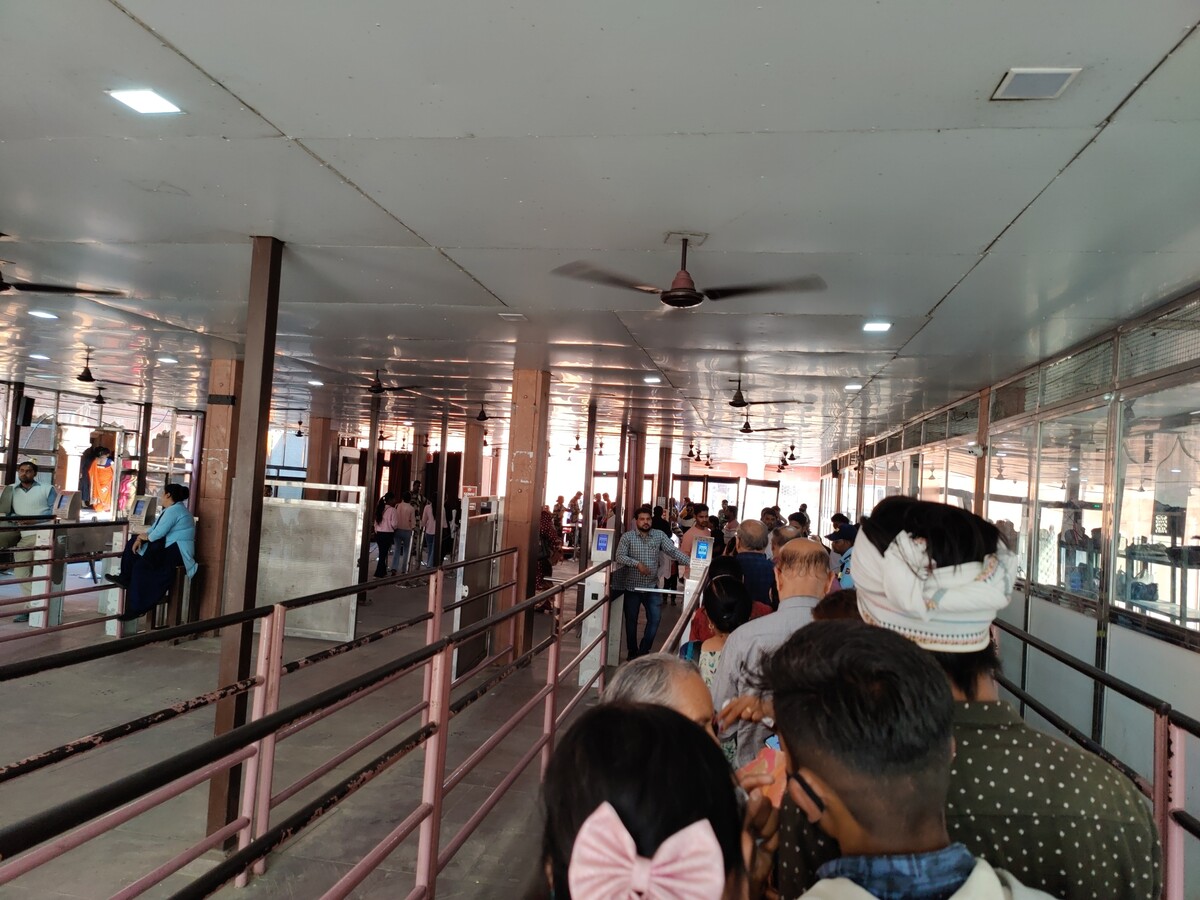Review:
The Stars, Like Dust, by Isaac Asimov
| Series: |
Galactic Empire #2 |
| Publisher: |
Fawcett Crest |
| Copyright: |
1950, 1951 |
| Printing: |
June 1972 |
| Format: |
Mass market |
| Pages: |
192 |
The Stars, Like Dust is usually listed as the first book in
Asimov's lesser-known Galactic Empire Trilogy since it takes place before
Pebble in the Sky.
Pebble in the
Sky was published first, though, so I count it as the second book. It is
very early science fiction with a few mystery overtones.
Buying books produces about 5% of the pleasure of reading them while
taking much less than 5% of the time. There was a time in my life when I
thoroughly enjoyed methodically working through a used book store, list in
hand, tracking down cheap copies to fill in holes in series. This means
that I own a lot of books that I thought at some point that I would want
to read but never got around to, often because, at the time, I was feeling
completionist about some series or piece of world-building. From time to
time, I get the urge to try to read some of them.
Sometimes this is a poor use of my time.
The Galactic Empire series is from Asimov's first science fiction period,
after the
Foundation series but contemporaneous with their
collection into novels. They're set long, long before
Foundation,
but after humans have inhabited numerous star systems and Earth has become
something of a backwater. That process is just starting in
The
Stars, Like Dust: Earth is still somewhere where an upper-class son might
be sent for an education, but it has been devastated by nuclear wars and
is well on its way to becoming an inward-looking relic on the edge of
galactic society.
Biron Farrill is the son of the Lord Rancher of Widemos, a wealthy noble
whose world is one of those conquered by the Tyranni. In many other SF
novels, the Tyranni would be an alien race; here, it's a hierarchical and
authoritarian human civilization. The book opens with Biron discovering a
radiation bomb planted in his dorm room. Shortly after, he learns that
his father had been arrested. One of his fellow students claims to be in
Biron's side against the Tyranni and gives him false papers to travel to
Rhodia, a wealthy world run by a Tyranni sycophant.
Like most books of this era,
The Stars, Like Dust is a short novel
full of plot twists. Unlike some of its contemporaries, it's not devoid
of characterization, but I might have liked it better if it were. Biron
behaves like an obnoxious teenager when he's not being an arrogant ass.
There is a female character who does a few plot-relevant things and at no
point is sexually assaulted, so I'll give Asimov that much, but the gender
stereotypes are ironclad and there is an entire subplot focused on what I
can only describe as seduction via petty jealousy.
The writing... well, let me quote a typical passage:
There was no way of telling when the threshold would be reached.
Perhaps not for hours, and perhaps the next moment. Biron remained
standing helplessly, flashlight held loosely in his damp hands. Half
an hour before, the visiphone had awakened him, and he had been at
peace then. Now he knew he was going to die.
Biron didn't want to die, but he was penned in hopelessly, and there
was no place to hide.
Needless to say, Biron doesn't die. Even if your tolerance for pulp
melodrama is high, 192 small-print pages of this sort of thing is
wearying.
Like a lot of Asimov plots,
The Stars, Like Dust has some of the
shape of a mystery novel. Biron, with the aid of some newfound companions
on Rhodia, learns of a secret rebellion against the Tyranni and attempts
to track down its base to join them. There are false leads, disguised
identities, clues that are difficult to interpret, and similar classic
mystery trappings, all covered with a patina of early 1950s imaginary
science. To me, it felt constructed and artificial in ways that made the
strings Asimov was pulling obvious. I don't know if someone who likes
mystery construction would feel differently about it.
The worst part of the plot thankfully doesn't come up much. We learn
early in the story that Biron was on Earth to search for a long-lost
document believed to be vital to defeating the Tyranni. The nature of
that document is revealed on the final page, so I won't spoil it, but if
you try to think of the stupidest possible document someone could have
built this plot around, I suspect you will only need one guess. (In
Asimov's defense, he blamed
Galaxy editor H.L. Gold for persuading
him to include this plot, and disavowed it a few years later.)
The Stars, Like Dust is one of the worst books I have ever read.
The characters are overwrought, the politics are slapdash and build on
broad stereotypes, the romantic subplot is dire and plays out mainly via
the Biron egregiously manipulating his petulant love interest, and the
writing is annoying. Sometimes pulp fiction makes up for those common
flaws through larger-than-life feats of daring, sweeping visions of future
societies, and ever-escalating stakes. There is little to none of that
here. Asimov instead provides tedious political maneuvering among a class
of elitist bankers and land owners who consider themselves natural
leaders. The only places where the power structures of this future
government make sense are where Asimov blatantly steals them from either
the Roman Empire or the Doge of Venice.
The one thing this book has going for it the thing, apart from
bloody-minded completionism, that kept me reading is that the technology
is hilariously weird in that way that only 1940s and 1950s science fiction
can be. The characters have access to communication via some sort of
interstellar telepathy (messages coded to a specific person's "brain
waves") and can travel between stars through hyperspace jumps, but each
jump is manually calculated by referring to the pilot's (paper!) volumes of
the
Standard Galactic Ephemeris. Communication between ships (via
"etheric radio") requires manually aiming a radio beam at the area in
space where one thinks the other ship is. It's an unintentionally
entertaining combination of technology that now looks absurdly primitive
and science that is so advanced and hand-waved that it's obviously made
up.
I also have to give Asimov some points for using spherical coordinates.
It's a small thing, but the coordinate systems in most SF novels and TV
shows are obviously not fit for purpose.
I spent about a month and a half of this year barely reading, and while
some of that is because I finally tackled a few projects I'd been putting
off for years, a lot of it was because of this book. It was only 192
pages, and I'm still curious about the glue between Asimov's
Foundation and
Robot series, both of which I devoured as a
teenager. But every time I picked it up to finally finish it and start
another book, I made it about ten pages and then couldn't take any more.
Learn from my error: don't try this at home, or at least give up if the
same thing starts happening to you.
Followed by
The Currents of Space.
Rating: 2 out of 10
 Now that we are back from our six month period in Argentina, we
decided to adopt a kitten, to bring more diversity into our
lives. Perhaps this little girl will teach us to think outside the
box!
Now that we are back from our six month period in Argentina, we
decided to adopt a kitten, to bring more diversity into our
lives. Perhaps this little girl will teach us to think outside the
box!



 Our retiring room at the Old Delhi Railway Station.
Our retiring room at the Old Delhi Railway Station.
 Security outside the Taj Mahal complex.
Security outside the Taj Mahal complex.
 This red colored building is entrance to where you can see the Taj Mahal.
This red colored building is entrance to where you can see the Taj Mahal.
 Taj Mahal.
Taj Mahal.
 Shoe covers for going inside the mausoleum.
Shoe covers for going inside the mausoleum.
 Taj Mahal from side angle.
Taj Mahal from side angle.




 My brain is currently suffering from an overload caused by grading student
assignments.
In search of a somewhat productive way to procrastinate, I thought I
would share a small script I wrote sometime in 2023 to facilitate my grading
work.
I use Moodle for all the classes I teach and students use it to hand me out
their papers. When I'm ready to grade them, I download the ZIP archive Moodle
provides containing all their PDF files and comment them
My brain is currently suffering from an overload caused by grading student
assignments.
In search of a somewhat productive way to procrastinate, I thought I
would share a small script I wrote sometime in 2023 to facilitate my grading
work.
I use Moodle for all the classes I teach and students use it to hand me out
their papers. When I'm ready to grade them, I download the ZIP archive Moodle
provides containing all their PDF files and comment them  I had finished sewing my jeans, I had a scant 50 cm of elastic denim
left.
Unrelated to that, I had just finished drafting a vest with Valentina,
after
I had finished sewing my jeans, I had a scant 50 cm of elastic denim
left.
Unrelated to that, I had just finished drafting a vest with Valentina,
after 

 The other thing that wasn t exactly as expected is the back: the pattern
splits the bottom part of the back to give it sufficient spring over
the hips . The book is probably published in 1892, but I had already
found when drafting the foundation skirt that its idea of hips
includes a bit of structure. The enough steel to carry a book or a cup
of tea kind of structure. I should have expected a lot of spring, and
indeed that s what I got.
To fit the bottom part of the back on the limited amount of fabric I had
to piece it, and I suspect that the flat felled seam in the center is
helping it sticking out; I don t think it s exactly bad, but it is
a peculiar look.
Also, I had to cut the back on the fold, rather than having a seam in
the middle and the grain on a different angle.
Anyway, my next waistcoat project is going to have a linen-cotton lining
and silk fashion fabric, and I d say that the pattern is good enough
that I can do a few small fixes and cut it directly in the lining, using
it as a second mockup.
As for the wrinkles, there is quite a bit, but it looks something that
will be solved by a bit of lightweight boning in the side seams and in
the front; it will be seen in the second mockup and the finished
waistcoat.
As for this one, it s definitely going to get some wear as is, in casual
contexts. Except. Well, it s a denim waistcoat, right? With a very
different cut from the get a denim jacket and rip out the sleeves , but
still a denim waistcoat, right? The kind that you cover in patches,
right?
The other thing that wasn t exactly as expected is the back: the pattern
splits the bottom part of the back to give it sufficient spring over
the hips . The book is probably published in 1892, but I had already
found when drafting the foundation skirt that its idea of hips
includes a bit of structure. The enough steel to carry a book or a cup
of tea kind of structure. I should have expected a lot of spring, and
indeed that s what I got.
To fit the bottom part of the back on the limited amount of fabric I had
to piece it, and I suspect that the flat felled seam in the center is
helping it sticking out; I don t think it s exactly bad, but it is
a peculiar look.
Also, I had to cut the back on the fold, rather than having a seam in
the middle and the grain on a different angle.
Anyway, my next waistcoat project is going to have a linen-cotton lining
and silk fashion fabric, and I d say that the pattern is good enough
that I can do a few small fixes and cut it directly in the lining, using
it as a second mockup.
As for the wrinkles, there is quite a bit, but it looks something that
will be solved by a bit of lightweight boning in the side seams and in
the front; it will be seen in the second mockup and the finished
waistcoat.
As for this one, it s definitely going to get some wear as is, in casual
contexts. Except. Well, it s a denim waistcoat, right? With a very
different cut from the get a denim jacket and rip out the sleeves , but
still a denim waistcoat, right? The kind that you cover in patches,
right?
 Mee Goreng, a dish made of noodles in Malaysia.
Mee Goreng, a dish made of noodles in Malaysia.
 Me at Petronas Towers.
Me at Petronas Towers.
 Photo with Malaysians.
Photo with Malaysians.
 For all interested people who are reasonably close to central Argentina, or can
be persuaded to come here in a month s time You are all welcome!
It seems I managed to convince my good friend Mart n Bayo (some Debian people
will remember him, as he was present in DebConf19 in Curitiba, Brazil) to get
some facilities for us to have a nice Debian get-together in Central Argentina.
For all interested people who are reasonably close to central Argentina, or can
be persuaded to come here in a month s time You are all welcome!
It seems I managed to convince my good friend Mart n Bayo (some Debian people
will remember him, as he was present in DebConf19 in Curitiba, Brazil) to get
some facilities for us to have a nice Debian get-together in Central Argentina.





 CW for body size change mentions
I needed a corset, badly.
Years ago I had a chance to have my measurements taken by a former
professional corset maker and then a lesson in how to draft an underbust
corset, and that lead to me learning how nice wearing a well-fitted
corset feels.
Later I tried to extend that pattern up for a midbust corset, with
success.
And then my body changed suddenly, and I was no longer able to wear
either of those, and after a while I started missing them.
Since my body was still changing (if no longer drastically so), and I
didn t want to use expensive materials for something that had a risk of
not fitting after too little time, I decided to start by making myself a
summer lightweight corset in aida cloth and plastic boning (for which I
had already bought materials). It fitted, but not as well as the first
two ones, and I ve worn it quite a bit.
I still wanted back the feeling of wearing a comfy, heavy contraption of
coutil and steel, however.
After a lot of procrastination I redrafted a new pattern, scrapped
everything, tried again, had my measurements taken by a dressmaker
[#dressmaker], put them in the draft, cut a first mock-up in cheap
cotton, fixed the position of a seam, did a second mock-up in denim
[#jeans] from an old pair of jeans, and then cut into the cheap
herringbone coutil I was planning to use.
And that s when I went to see which one of the busks in my stash would
work, and realized that I had used a wrong vertical measurement and the
front of the corset was way too long for a midbust corset.
CW for body size change mentions
I needed a corset, badly.
Years ago I had a chance to have my measurements taken by a former
professional corset maker and then a lesson in how to draft an underbust
corset, and that lead to me learning how nice wearing a well-fitted
corset feels.
Later I tried to extend that pattern up for a midbust corset, with
success.
And then my body changed suddenly, and I was no longer able to wear
either of those, and after a while I started missing them.
Since my body was still changing (if no longer drastically so), and I
didn t want to use expensive materials for something that had a risk of
not fitting after too little time, I decided to start by making myself a
summer lightweight corset in aida cloth and plastic boning (for which I
had already bought materials). It fitted, but not as well as the first
two ones, and I ve worn it quite a bit.
I still wanted back the feeling of wearing a comfy, heavy contraption of
coutil and steel, however.
After a lot of procrastination I redrafted a new pattern, scrapped
everything, tried again, had my measurements taken by a dressmaker
[#dressmaker], put them in the draft, cut a first mock-up in cheap
cotton, fixed the position of a seam, did a second mock-up in denim
[#jeans] from an old pair of jeans, and then cut into the cheap
herringbone coutil I was planning to use.
And that s when I went to see which one of the busks in my stash would
work, and realized that I had used a wrong vertical measurement and the
front of the corset was way too long for a midbust corset.
 Luckily I also had a few longer busks, I basted one to the denim mock up
and tried to wear it for a few hours, to see if it was too long to be
comfortable. It was just a bit, on the bottom, which could be easily
fixed with the Power Tools
Luckily I also had a few longer busks, I basted one to the denim mock up
and tried to wear it for a few hours, to see if it was too long to be
comfortable. It was just a bit, on the bottom, which could be easily
fixed with the Power Tools I could have been a bit more precise with the binding, as it doesn t
align precisely at the front edge, but then again, it s underwear,
nobody other than me and everybody who reads this post is going to see
it and I was in a hurry to see it finished. I will be more careful with
the next one.
I could have been a bit more precise with the binding, as it doesn t
align precisely at the front edge, but then again, it s underwear,
nobody other than me and everybody who reads this post is going to see
it and I was in a hurry to see it finished. I will be more careful with
the next one.
 I also think that I haven t been careful enough when pressing the seams
and applying the tape, and I ve lost about a cm of width per part, so
I m using a lacing gap that is a bit wider than I planned for, but that
may change as the corset gets worn, and is still within tolerance.
Also, on the morning after I had finished the corset I woke up and
realized that I had forgotten to add garter tabs at the bottom edge.
I don t know whether I will ever use them, but I wanted the option, so
maybe I ll try to add them later on, especially if I can do it without
undoing the binding.
The next step would have been flossing, which I proceeded to postpone
until I ve worn the corset for a while: not because there is any reason
for it, but because I still don t know how I want to do it :)
What was left was finishing and uploading the
I also think that I haven t been careful enough when pressing the seams
and applying the tape, and I ve lost about a cm of width per part, so
I m using a lacing gap that is a bit wider than I planned for, but that
may change as the corset gets worn, and is still within tolerance.
Also, on the morning after I had finished the corset I woke up and
realized that I had forgotten to add garter tabs at the bottom edge.
I don t know whether I will ever use them, but I wanted the option, so
maybe I ll try to add them later on, especially if I can do it without
undoing the binding.
The next step would have been flossing, which I proceeded to postpone
until I ve worn the corset for a while: not because there is any reason
for it, but because I still don t know how I want to do it :)
What was left was finishing and uploading the 
 This post describes how I m using
This post describes how I m using
 Over roughly the last year and a half I have been participating as a reviewer in
ACM s
Over roughly the last year and a half I have been participating as a reviewer in
ACM s  Now, I think it's safe to assume this program is dead and buried, and
anyways I'm running
Now, I think it's safe to assume this program is dead and buried, and
anyways I'm running